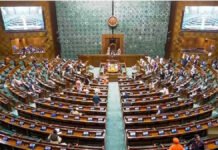In a move that could significantly alter the dynamics of India–U.S. trade relations, the United States has announced a 25 percent tariff on imports from India, effective August 1. The announcement, made by President Donald Trump, also includes an additional but unspecified penalty tied to India’s continued defense and energy engagements with Russia.
President Trump accused India of maintaining high tariffs and stringent non-tariff barriers, calling them among the “most obnoxious” in the world. He described the measure as a necessary corrective to what he termed an “imbalanced” trade relationship. The tariffs, which apply across a range of sectors, have raised alarms in New Delhi and sparked concerns within India’s export industry.
India’s Commerce Ministry responded by stating that it is carefully evaluating the implications of the U.S. decision and reiterated its commitment to a “fair and mutually beneficial” trade agreement. Indian officials said they have safeguarded sensitive sectors such as dairy, cereals, millets, pulses, and key strategic exclusions including energy fuels, marine vessels, smartphones, and optical fibers.
The tariff decision comes even as India and the UK move closer to finalizing a Free Trade Agreement, with the British side expected to approve the deal in its Parliament soon. Meanwhile, the latest U.S. move adds uncertainty to India’s broader trade outlook.
Exporters in India are bracing for a difficult period, especially in sectors such as textiles, gems and jewellery, chemicals, ceramics, and electronics. These industries rely heavily on the U.S. market and could now face decreased competitiveness and shrinking margins.
Business leaders in India have called for swift diversification of export destinations, suggesting an increased focus on Europe and ASEAN nations. There is also a growing chorus urging the Indian government to provide relief packages or incentives to affected industries.
Market analysts suggest that this tariff decision is likely a negotiating tactic rather than a final breakdown in talks. However, the move has caused volatility in Indian financial markets and put pressure on the rupee.
This decision follows a broader U.S. policy shift toward aggressive tariff use. A similar package, known as the “Liberation Day” tariffs, had earlier targeted multiple nations and is currently being challenged in U.S. courts for bypassing congressional approval. The current developments have added fuel to the debate within the U.S. about executive overreach in trade decisions.
India is expected to hold high-level consultations in the coming days to map out its strategic and economic response. Trade observers believe that despite the tension, both sides are likely to return to the negotiating table, given their long-standing strategic and commercial ties.
Focus Keywords: US tariffs on India, 25 percent tariff India exports, Indo-US trade tension, Trump tariff India Russia, Indian export sectors, trade retaliation, India economic policy, global trade relations, India Russia energy ties, India UK FTA.














